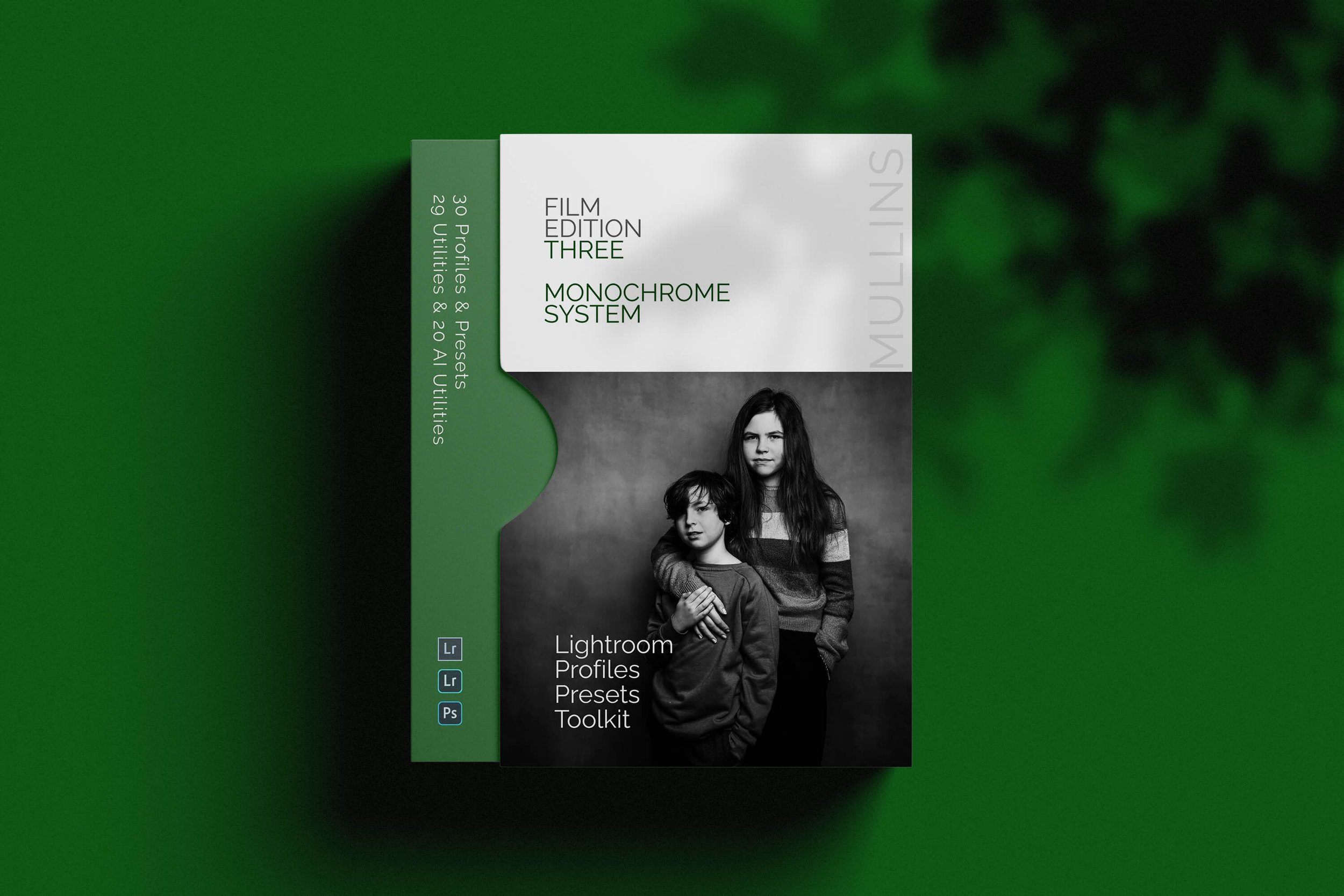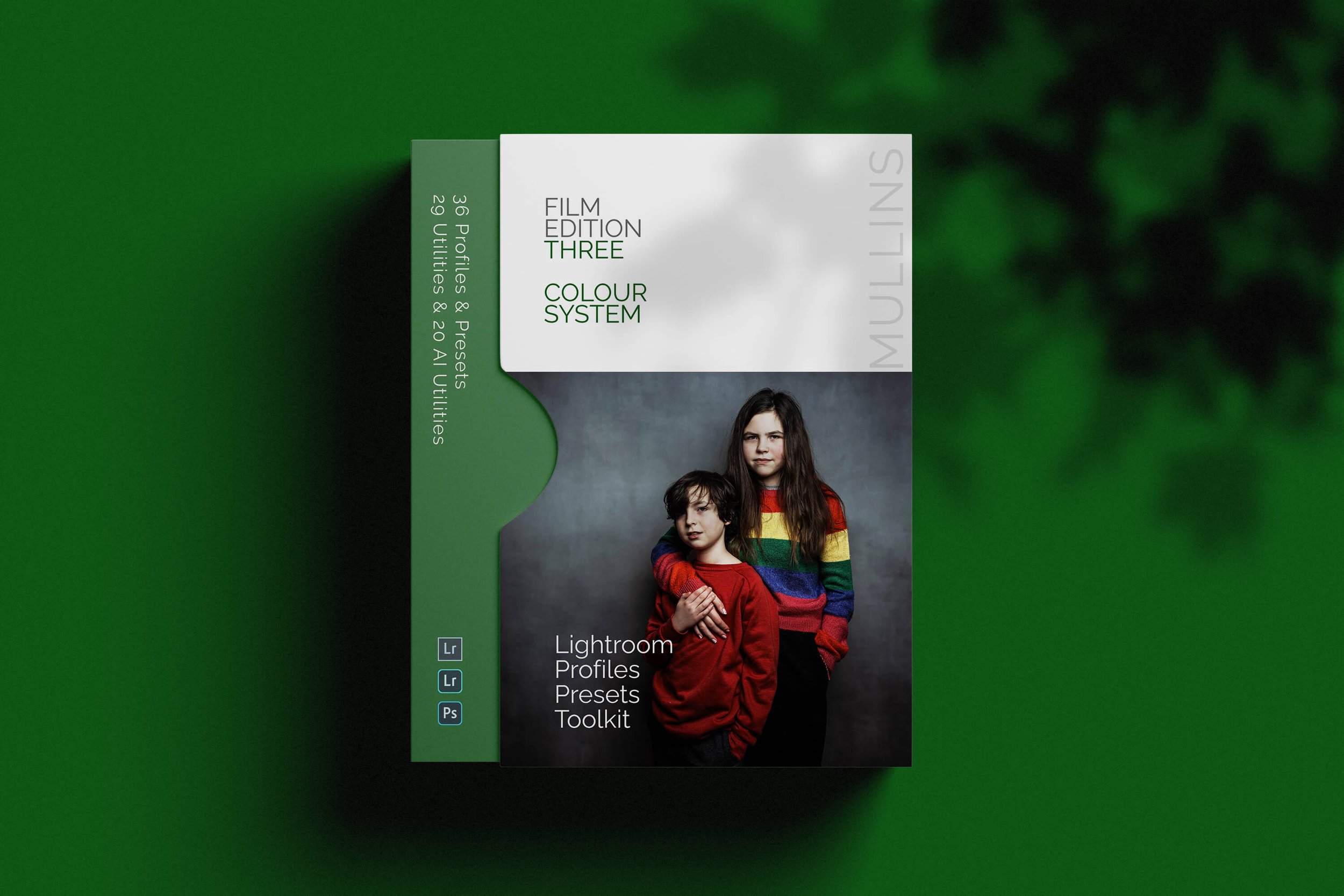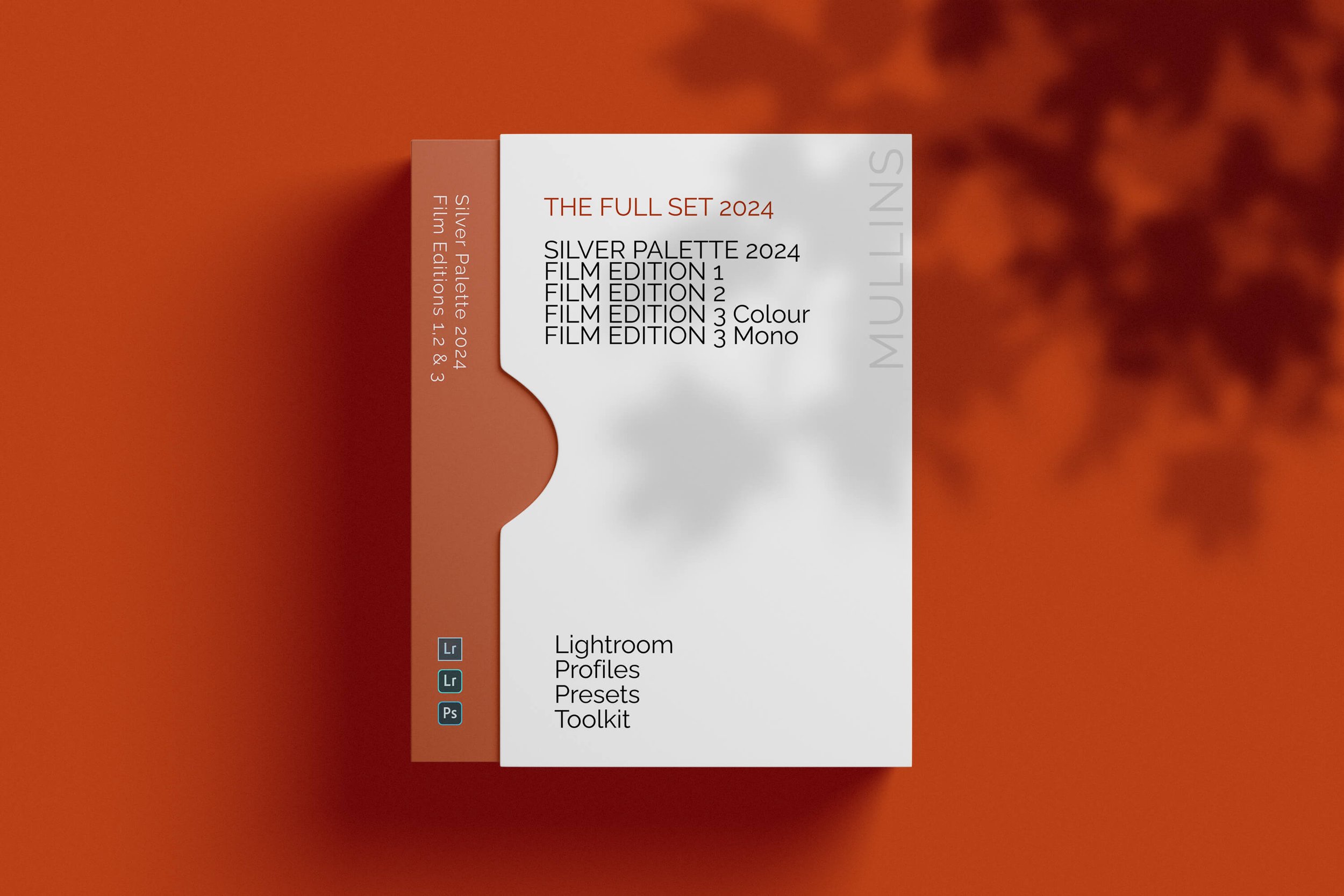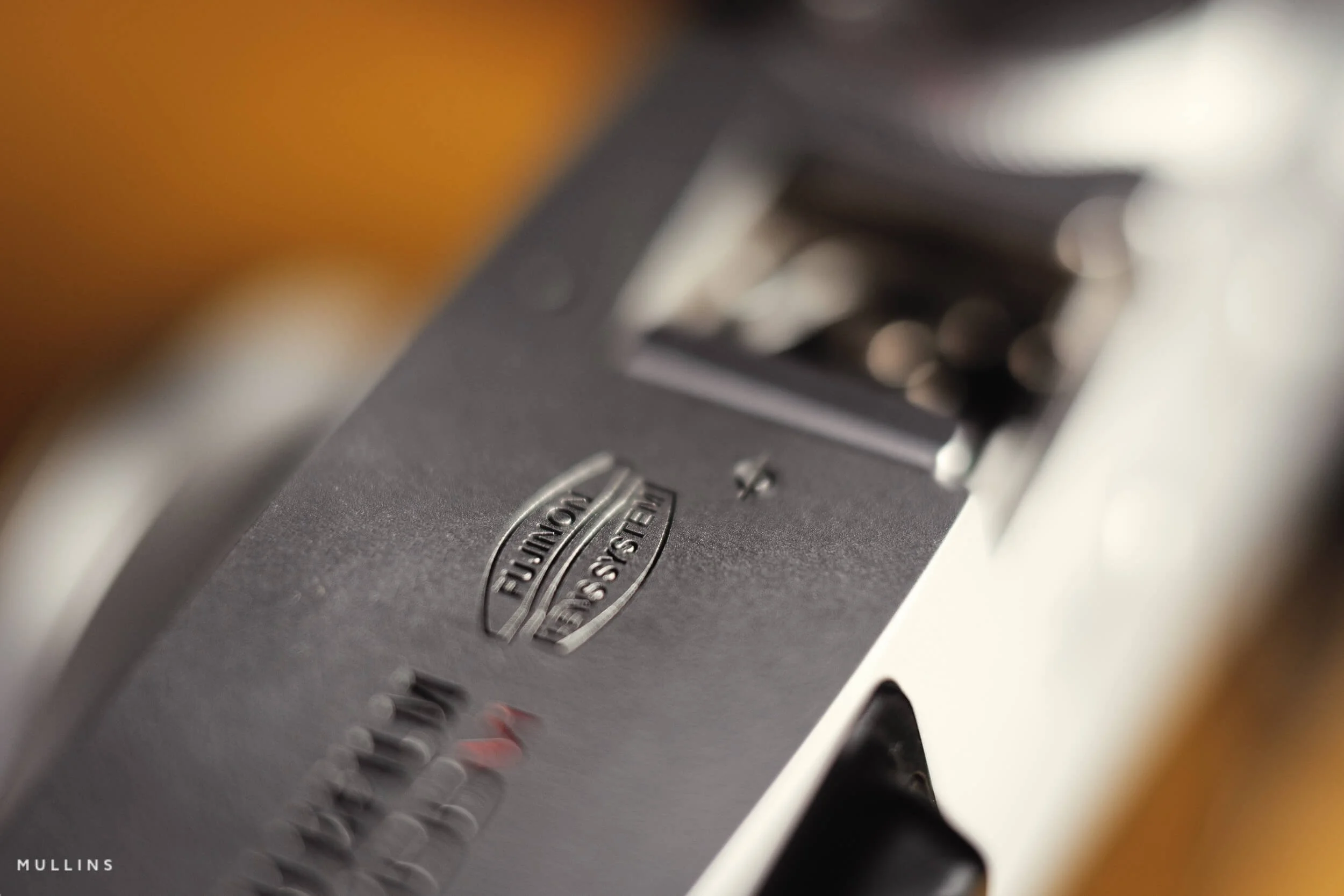Fujifilm X100VI Review
My YouTube Review Video (text and images below)
Official Promo Video by Fujifilm
Fujifilm X100VI Review - Introduction
Today is very special as it sees the release of the Fujifilm X100VI (or six, as some people will refer to it).
I cannot recall a camera as hotly anticipated as this in the Fujifilm ecosystem.
I was due to be in Tokyo at the Fujifilm X-Summit today; however, due to personal circumstances, I had to postpone my trip at the last moment, which is a shame, but sometimes life throws you lemons, as they say.
However, I have had a prototype of the X1006 for a short time, and today, I’ll give you my thoughts and feelings on this camera.
Let's rewind before exploring this new addition to the Fujifilm lineup.
It all started in 2011 when Fujifilm introduced the world to the FinePix X100 - a camera that wasn't just a tool but a statement. This little marvel combined retro charm with cutting-edge technology, sparking a revolution in photography.
I still remember the first time I held the X100; its classic design and intuitive controls reminded me of the golden age of film photography.
Over the years, I've closely followed the evolution of the X100 series, and I’m proud to say I’ve been involved “in small ways” in some of the design decisions along the way.
Each iteration brought something new to the table – enhancing image quality, speed, and usability, all while preserving that signature Fujifilm feel.
Now, we've arrived at the X100VI. It's not just another update; it's a leap forward.
A new 40-megapixel sensor
New processor and AF system
SIX STOP in-body image stabilisation
New 4:3 and 5:4 aspect rations
6K Video capability
Fresh film simulations,
Fujifilm X100VI Quick FAQ:
-
The Fujifilm X100VI offers cutting-edge image quality with a 40.2MP X-Trans CMOS 5 HR sensor, advanced autofocus with subject detection, and 6.2K/30p 4:2:2 10-bit internal video recording. It includes 20 film simulation modes, a built-in 4-stop ND filter, and supports Frame.io Camera to Cloud.
-
Yes, the X100VI features a newly developed in-body image stabilization (IBIS) system, offering up to 6.0 stops of compensation for sharp images and stable videos.
-
The X100VI offers advanced video performance with the ability to record movies up to 6.2K internally at 30p in 4:2:2 10-bit color, along with 4K/60p and high-speed 1080/240p options.
-
The X100VI uses an advanced autofocus prediction algorithm for reliable focusing on continuously moving subjects, enhanced by deep-learning AI technology for subject detection including animals, birds, and vehicles.
-
The X100VI offers 20 film simulation modes, including the new REALA ACE mode, harnessing Fujifilm's 90 years of color science to replicate the look of classic photographic films.
Fujifilm X100VI -1/125 @F2 ISO200
Fujifilm X100VI - 1/125 @F2 ISO 320
This camera promises to push the boundaries of what we expect from compact photography gear.
But as much as I admire Fujifilm's innovations, I wish they could have included some things, and we’ll get to those in due course.
Now, I’ve edited all of the images in this film, except when I talk about the film simulations with my new Advanced Lightroom Profiles and Presets – Film Edition 3. I’ve spent six months building this system, which includes authentic film-like profiles, presets and a suit of AI Utilities. You can get a 20% discount with the code YT20.
Fujifilm X100VI Review - Look & Feel
Let’s talk about something that's been a constant in the X100 series – its design. The Fujifilm X100 range, in my opinion, is a testament to Fujifilm's commitment to a design philosophy that blends classic aesthetics with modern functionality. This camera isn't just a tool but a statement piece.
The X100VI retains pretty much all the same aesthetics as the X100V.
Its retro design, with tactile dials and a timeless viewfinder, harks back to the days of film cameras, but the X100VI is actually packed with the power of the digital age.
This blend of old and new has remained a hallmark of the X100 series, from the original Finepix X100 to the latest X100VI.
But of course, nobody should buy a camera just for its looks. A camera is a tool, not jewellery.
The fixed 23mm lens on the X100V is a story in itself. This decision by Fujifilm to stick with a fixed lens across all X100 models is bold and unconventional.
Fujifilm X100VI -1/125 @F2 ISO 160
It challenges photographers to engage with their surroundings differently. With a fixed focal length, you move, explore, and interact with your environment to frame that perfect shot. It's a lens that captures not just photos but experiences, too.
This is why I think the X100VI, like its siblings, will be adored by street and travel photographers alike.
It's unobtrusive, fast, and delivers exceptional image quality, making it an ideal companion for capturing the candid, the spontaneous, and the unrepeatable.
Professional working photographers will also appreciate its reliability and unique character, often using it as a trusty sidekick to their larger rigs.
In essence, I feel the X100VI is more than just a camera. Like all the X100s before it, it’s a bridge between the past and the present, a tool that demands creativity and engagement, and a beloved companion for photographers who value every step of the photographic journey.
The X100VI is so similar in ergonomics and looks so similar to the X100V that it’s hard to notice the difference between them. -
I can’t be scientific, but I’d say the weight and size of the X100V is basically the same as the X100VI. Perhaps a tiny bit heavier and maybe 1 or 2 mm bigger. Not much at all, and considering they have fitted the IBIS System in the camera, that’s quite a feat of engineering.
The only noticeable difference I can see from the front is a slight adjustment to the Viewfinder Selector. It’s higher quality and more tactile now.
The buttons on the camera's rear are identical, with a few minor feature adjustments. The Bluetooth icon is next to the Disp/Back button, but they have brought the two buttons along the top back plate closer, which is nice as I always had to stretch a bit with the X100V.
There is no D-pad for those hopeful of its return – the D-pad, or round pad actually, was last seen in the X100F, and the joystick remains the main controller on the rear of the camera.
I think the rotating pad last seen in the X100S is my favourite, but we stay with the joystick for now.
Across the top, another nice ergonomic change I feel is the distance between the Exposure Compensation dial and the top function button, which is a little more, making it easier to access.
Besides that, the X100VI retains the same design and aesthetic as its predecessor, which I think is wonderful.
If you consider the original FinePix X100, all the way through the S, T, F, V and now VI – the design philosophy has remained the same, and Fujifilm should be applauded for this.
I still, to this day, think it's brave of them, and it’s something they have rightly been rewarded by with sales.
Fujifilm X100VI Review - New Film Simulations
Before discussing the big new additions, I want to discuss the new film simulations in the X100VI quickly.
There are three new film simulations in the X100VI:
Reala Ace
Nostalgic Neg
Eterna Bleach Bypass.
The Nostalgic Negative, available on a range of cameras including the GFX 100S, GFX 50S II, X-H2, X-H2S, and X-T5, is Fujifilm's homage to the golden era of film photography. It delicately combines soft shadow tonalities, reminiscent of the Eterna simulation, with warmth and contrast akin to Classic Chrome.
This simulation is a favourite for its ability to infuse images with warmth and nostalgia, reminiscent of the photographic styles from the 60s to the 80s.
Eterna Bleach Bypass, featured in cameras like the X-T4, 5 and GFX100, offers a starkly different aesthetic.
Inspired by a unique film processing technique, this simulation delivers high contrast and low saturation images, creating a gritty, dramatic look. It's particularly suited for capturing mood and intensity, with its deep shadows and muted colours offering a dramatic and moody quality to photographs.
Reala Ace, only previously available in the Fujifilm GFX 100 II, is a nod to the classic Fujicolor Reala film. This simulation brings a realistic colour rendition to life, balancing a less saturated palette with a natural, lifelike quality.
It stands out for its ability to capture the subtle nuances of colour, making it a favourite among photographers seeking authenticity and a touch of nostalgia in their digital imagery.
I love creating my recipes with Fujifilm Simulations, and I’ve got a whole section on this website dedicated to some of my favourite simulations.
Fujifilm X100VI Review - IBIS
They said it couldn’t be done, but the X100VI does have In-body Image Stabilisation.
Having IBIS in this camera is a game-changer for a few key reasons.
First off, think about those times you're shooting in low light. The X100VI, with IBIS, lets you use a slower shutter, mitigating the worry of that annoying blur from handshake.
This is super handy for me because, let's face it, I’m not getting any younger, but more importantly, the camera becomes even more useful in places like dark churches or oak-panelled rooms when I’m shooting weddings or at home in our 300-year-old cottage where we have minimal daylight opportunities.
Then there's the overall sharpness of your photos. Those tiny, almost imperceptible shakes of your hand? IBIS can help give you crisper images, which is fantastic because the X100VI's fixed lens is already quite versatile for different photography styles, as I’ve already mentioned.
And speaking of versatility, the IBIS in the X100VI really frees you up. Imagine taking longish exposure shots of a cityscape at dusk, all handheld, without that dreaded camera shake. It's all about capturing the moment without being bogged down by extra gear.
All of the X100 cameras have a built-in ND Filter, so I have found that coupling that with the IBIS means I can get some shots without needing a tripod.
For video, it's a similar story. The X100VI turns into this smooth operator for video, reducing the shakiness, especially when you're on the move.
It's pretty neat for a camera that's already compact and convenient for everyday use.
So yeah, the IBIS feature in the Fujifilm X100VI? It's a big deal.
It basically bumps up the camera's game, making it more adaptable, more user-friendly, and a heck of a lot more fun to shoot with, especially when you're out and about.
Fujifilm X100VI - 1/60 @F2 ISO 5,000
Fujifilm X100VI - 1/60 @F2 ISO 320
Fujifilm X100VI - 1/400 @F2 ISO125
Fujifilm X100VI - 1sec @F16 ISO125
Fujifilm X100VI Review - X-Trans 5 Sensor
The X100VI marks a significant upgrade in terms of sensor technology.
Moving from the 26MP sensor in the X100V to a 40MP sensor in the X100VI, we gain a massive increase in resolution.
This leap means more detailed images, which is especially beneficial for large prints where clarity is crucial. The higher resolution also offers greater flexibility in post-processing, allowing for extensive cropping without significant loss of detail.
The X100VI has the new X-Trans 5 40-megapixel sensor and the X Processor 5 system.
The X Processor 5 in the X100VI brings a suite of advancements:
AI-Driven Autofocus and Enhanced Subject Detection: This processor enables more intelligent focusing capabilities. It can track various subjects, including animals and moving vehicles, making the X100VI highly versatile for various photography genres.
And whilst I don’t expect any serious wildlife photographers to use the X100VI, this feature does seem to work well.
I tried it on my sedentary whippet and some angry herring gulls off the coast of Hearne Bay.
Remember, though, that whilst the X100VI has the same technology as the X-T5, etc., it will be throttled by the fixed lens.
Don’t expect the AF tracking to be on par with an X-T5 and a liner motor prime lens. But do expect it to be pretty close, and certainly expect it to be much faster than the X100V.
The X Processor 5 is also a step up in processing speed.
Everything feels quicker and more responsive – from shooting and buffering to navigating through the camera’s menu.
This increase in speed makes the X100VI more efficient in handling high-resolution 40MP images, ensuring that the camera operates smoothly even under demanding conditions.
More megapixels sometimes mean smaller pixels, but with the advanced sensor technology, the X100VI seems to handle low-light situations much better, balancing noise and detail, and the X100VI should manage noise more effectively than the X100V, especially at higher ISOs.
Additionally, Fujifilm has included the HEIF file format, which supports higher bit depth and better compression efficiency than JPEG and new ratios such as 4 b 3 and 5 by 4.
The processor's efficiency and power extend to video too, offering improved capabilities.
Fujifilm X100VI - 1/1100 @F5.6 ISO125
Fujifilm X100VI 1/125 @F2 ISO1000
Fujifilm X100VI 1/200 @F5.6 ISO500
This means better quality footage, higher resolution options, and more detailed colour grading possibilities for those who love to create videos. More on that in a while.
If someone were to ask me about the X100VI and its X Processor 5, I'd say it's like having a highly intelligent assistant built into your camera.
It significantly enhances the user experience, making the camera smarter, faster, and more capable in various photographic situations.
The jump from the X100V’s X Processor 4 to the X100VI’s X Processor 5 isn't just an incremental upgrade; it's a major leap forward in camera technology, equipping photographers with a tool that's not only powerful but also intuitive and responsive to their creative needs. It’s essentially an X-T5 in a little box.
Fujifilm X100VI Review - Movie Making
When it comes to making films, I don’t suppose the X100 series is the first camera that comes to many people's minds.
I mean, I expect there have been millions of “clips” taken on them, but the serious stuff belongs to the X-H2 and X-T5 range, I guess.
I don’t expect that to change, given the fixed lens in the Fujifilm X100VI; however, the filming capabilities, thanks to the new sensor, are quite an upgrade, and I think more and more people will be creating more and more “clips” with the X100VI when they see what it can do – especially as using those lovely film simulations makes it so easy to make a graded film straight in the camera.
The X100VI now has 6.2K30P Recording: This is a significant leap from the 4K30p of the X100V. The higher resolution allows for more detail and clarity, making it suitable, I think, for professional-grade productions. You can shoot this at up to 200 megabits per second, too.
4K Footage has also been updated to include 60p, which is particularly exciting for those interested in creating smooth slow-motion footage. Shooting at 60 frames per second in 4K means filmmakers can capture high-resolution video with the flexibility of slowing down the footage in post-production without losing quality.
Fujifilm X100VI Review - Any Downsides?
When I first received the prototype of the X100VI, I have to say I was a little surprised to see that it uses the same battery as the X100V. I was expecting the new battery we see in the X-T5, X-H2, etc.
Now, I get it. It’s entirely about size. They probably had a choice of changing the battery chamber and not including IBIS – but they made the right decision here.
It would have been lovely from the perspective of somebody like me who has multiple Fujifilm cameras to be able to consolidate batteries when I’m out shooting, but I’ll live with it. It’s no real drama.
We still need to buy the weather-resistant kit to make the X100VI truly weather-resistant. Again, I’m sure there are reasons for this, but it would be nice, perhaps, if the weather-resistant ring were in the box.
I understand why the ring is needed, as the lens is the weak spot for weather issues, but there you go. Besides, I once dropped my X100S into a swimming pool, and it still works fine, so it’s not a big issue for me.
Fujifilm X100VI Review - 1/125 @F2 ISO200
Some people were expecting dual card slots, though I certainly wasn’t.
I know the complications and size implications of this, so quite rightly, in my mind, the X100VI retains a single card slot. However, I was slightly surprised that the card slot wasn’t upgraded to UHS-II capabilities. But I guess that was all down to the battery decision and power consumption.
Fujifilm X100VI Review - Summary
Unless you live with your head under a rock, I don’t expect anything we’ve talked about here to be a surprise, perhaps except for IBIS.
I believe the supply issues that plagued the X100V over the last year are resolved, and the X100VI will be hitting the stores very soon.
If you love your compact cameras, there is no way you can be anything other than impressed with how Fujifilm has squeezed so much technology into this little charm of a camera.
It’s faster, more powerful, and has better autofocus, film simulations, and a better movie recording system.
And it still looks pretty much as it did eleven or twelve years ago.
Bravo Fujifilm, bravo.
Fujifilm Fujifilm X100VI - 1/180 @F2.2 ISO125



























